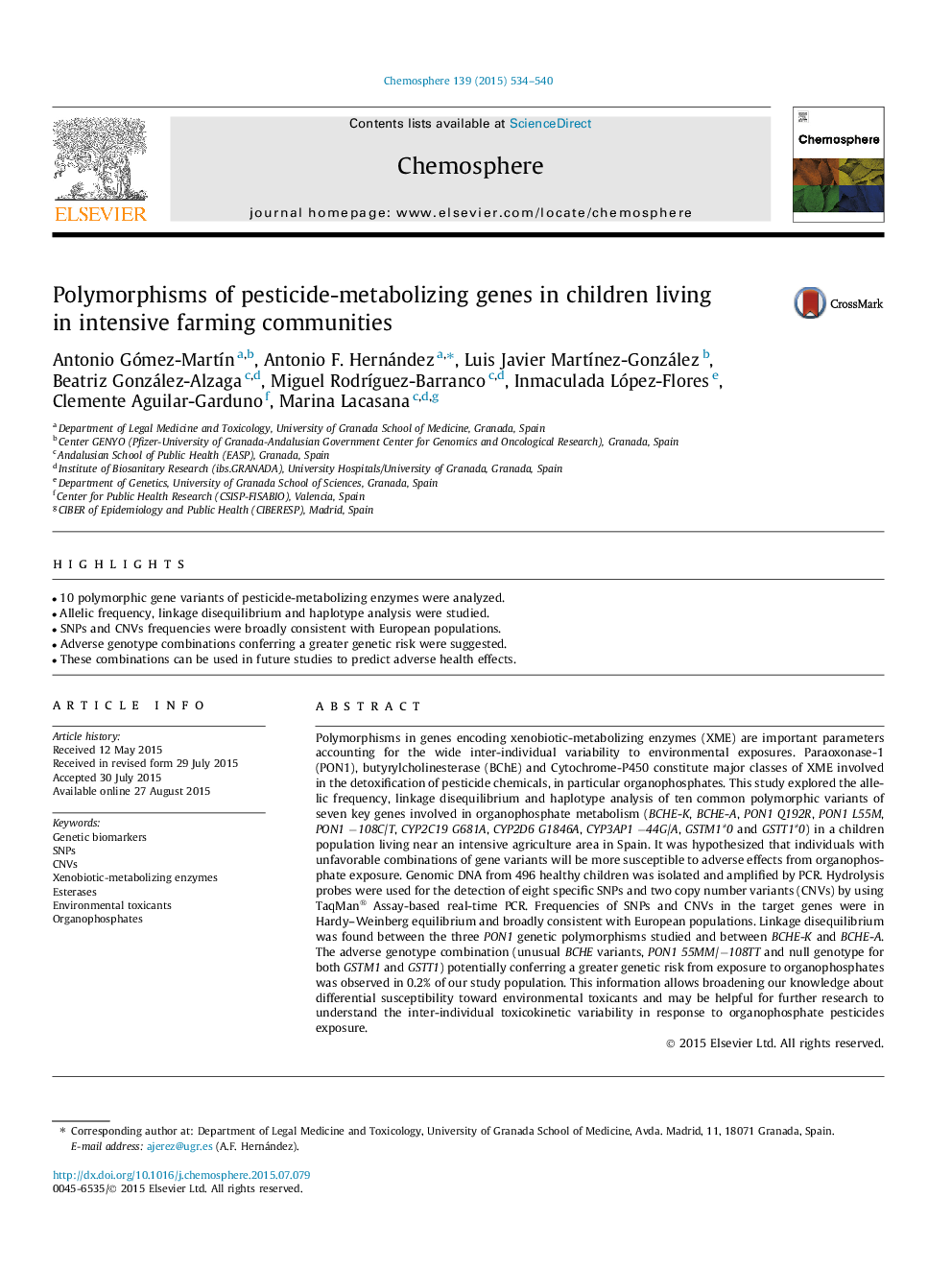| کد مقاله | کد نشریه | سال انتشار | مقاله انگلیسی | نسخه تمام متن |
|---|---|---|---|---|
| 4408189 | 1618832 | 2015 | 7 صفحه PDF | دانلود رایگان |
• 10 polymorphic gene variants of pesticide-metabolizing enzymes were analyzed.
• Allelic frequency, linkage disequilibrium and haplotype analysis were studied.
• SNPs and CNVs frequencies were broadly consistent with European populations.
• Adverse genotype combinations conferring a greater genetic risk were suggested.
• These combinations can be used in future studies to predict adverse health effects.
Polymorphisms in genes encoding xenobiotic-metabolizing enzymes (XME) are important parameters accounting for the wide inter-individual variability to environmental exposures. Paraoxonase-1 (PON1), butyrylcholinesterase (BChE) and Cytochrome-P450 constitute major classes of XME involved in the detoxification of pesticide chemicals, in particular organophosphates. This study explored the allelic frequency, linkage disequilibrium and haplotype analysis of ten common polymorphic variants of seven key genes involved in organophosphate metabolism (BCHE-K, BCHE-A, PON1 Q192R, PON1 L55M, PON1 −108C/T, CYP2C19 G681A, CYP2D6 G1846A, CYP3AP1 −44G/A, GSTM1∗0 and GSTT1∗0) in a children population living near an intensive agriculture area in Spain. It was hypothesized that individuals with unfavorable combinations of gene variants will be more susceptible to adverse effects from organophosphate exposure. Genomic DNA from 496 healthy children was isolated and amplified by PCR. Hydrolysis probes were used for the detection of eight specific SNPs and two copy number variants (CNVs) by using TaqMan® Assay-based real-time PCR. Frequencies of SNPs and CNVs in the target genes were in Hardy–Weinberg equilibrium and broadly consistent with European populations. Linkage disequilibrium was found between the three PON1 genetic polymorphisms studied and between BCHE-K and BCHE-A. The adverse genotype combination (unusual BCHE variants, PON1 55MM/−108TT and null genotype for both GSTM1 and GSTT1) potentially conferring a greater genetic risk from exposure to organophosphates was observed in 0.2% of our study population. This information allows broadening our knowledge about differential susceptibility toward environmental toxicants and may be helpful for further research to understand the inter-individual toxicokinetic variability in response to organophosphate pesticides exposure.
Journal: Chemosphere - Volume 139, November 2015, Pages 534–540
